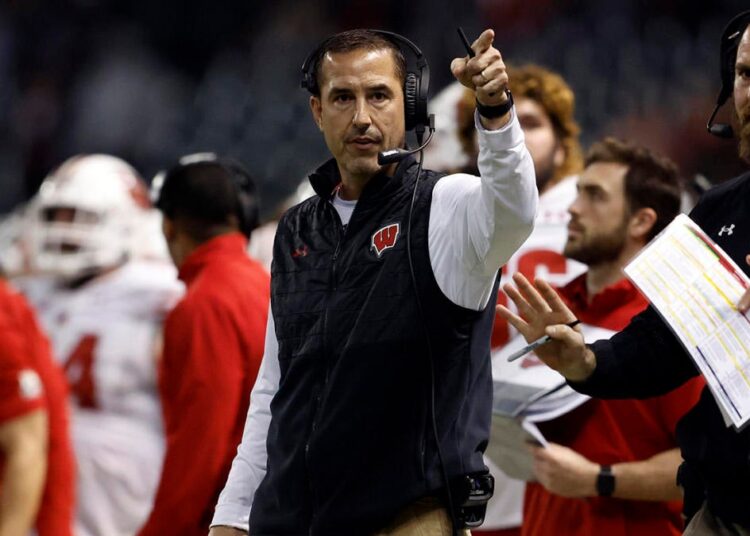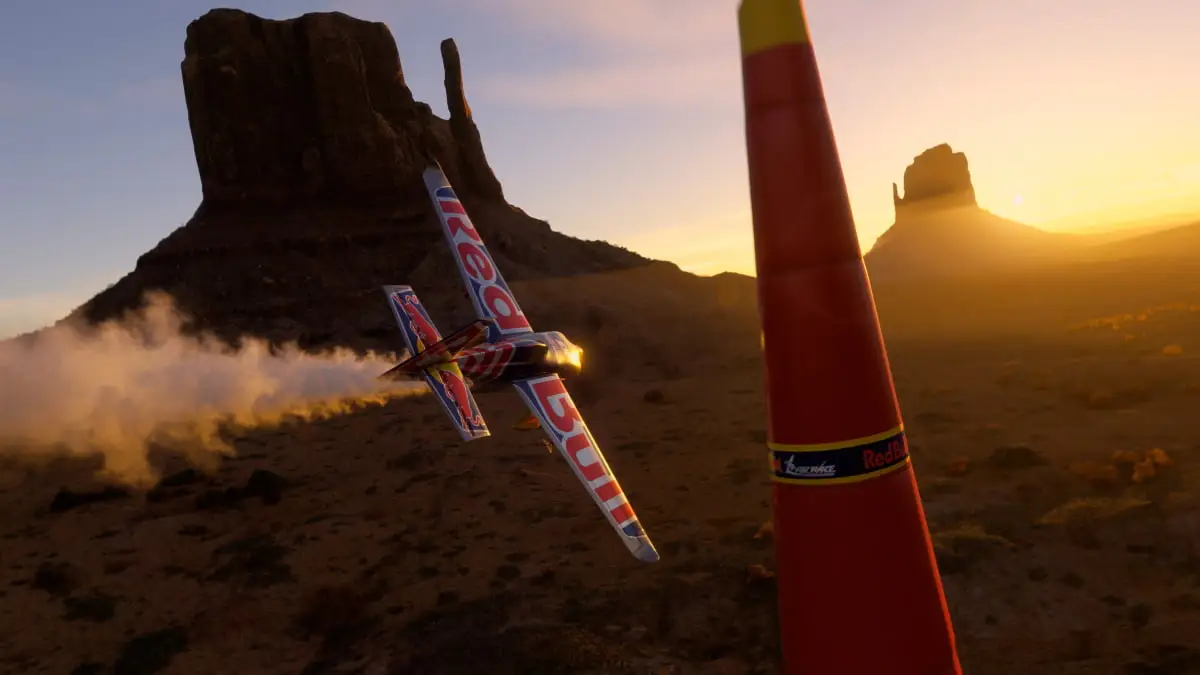What an interesting time it is for the Wisconsin Badgers. The program has become a model of consistency over the last 30 years. Wisconsin was mostly an afterthought in the Big Ten when Barry Alvarez took over the program in 1990 but has since become one of the conference’s stalwarts, even as the Big Ten has undergone massive changes itself.
Things will look quite a bit different in 2023, however. While Wisconsin changed from Alvarez to Bret Bielema and then to Paul Chryst — with an odd Gary Andersen experiment thrown in — the formula essentially stayed the same. Wisconsin was big beefy boys doing beefy boy things. This was a program of multiple tight-end sets, 220-pound battering ram running backs and ferocious defensive fronts. It wasn’t 3 yards and a cloud of dust as much as it was 3 yards and a world of hurt.
But, for whatever reason, the blueprint that had long been successful lost steam in 2022. After a 2-3 start to the season, Paul Chryst was fired following a 34-10 home loss to Illinois. Jim Leonhard, the former Badger and defensive coordinator long assumed to be a head coach in waiting, was named interim. Leonhard did not get the full-time job, however. Instead, Wisconsin went outside the family and brought in Luke Fickell, the former Ohio State linebacker who led Cincinnati to the College Football Playoff.
After three decades of knowing what we would get from Wisconsin, this spring offers a lot of questions we don’t have the answers to yet.
Offseason changes
It’d probably take less time to write about what hasn’t changed. Paul Chryst is gone, as is most of his staff. Fickell has arrived, and he’s not only bringing in a new staff, but a new approach. The ground-and-pound style associated with Wisconsin football is gone. The spread has replaced it.
Phil Longo is the new offensive coordinator. Longo spent the last four seasons as the offensive coordinator at North Carolina, where Sam Howell threw for 10,283 yards and 92 touchdowns in Longo’s offense. Wisconsin’s all-time leading passer is Darrell Bevell. He threw for 7,686 yards in four seasons from 1992-95 with 59 touchdowns, which is also the most any Badgers QB has thrown in history. Russell Wilson’s 2011 season in Madison, where he threw for 3,175 yards and 33 touchdowns, is the most prolific any Wisconsin QB has had. Statistically, that would’ve been Sam Howell’s third-best season at North Carolina. Howell was replaced by Drake Maye, who threw for 4,321 yards and 38 touchdowns as a freshman in Longo’s offense last year.
So, yeah, things will probably look a bit different. That said, Longo has gone out of his way to mention that just because he’s thrown the ball a lot in the past doesn’t mean the Badgers will be airing it out. The power run game still lives inside the spread, and given the presence of Braelon Allen in the offense, the offense will be built around its strengths.
Speaking of players, another change is at quarterback. Graham Mertz has transferred to Florida, and Tanner Mordecai, Nick Evers and Baedyn Locke have transferred in. Mordecai has far more experience than any of them and is expected to be the starter this fall.
On the defensive side of the ball, Mike Tressel, the nephew of former Ohio State coach Jim Tressel, takes over as defensive coordinator. He served in the same role at Cincinnati under Fickell in 2022. Tressel spent 14 seasons on Michigan State’s staff, so he has plenty of Big Ten experience. It will be interesting to see how Wisconsin’s defense evolves. The Badgers have played primarily out of a 3-4 base, but it was often more of a 2-4-5 formation with only two down linemen. Tressel’s Cincinnati defenses played primarily out of a 3-3-5. While there will be some changes, they won’t be as drastic as those seen on the offensive side of the ball.
Names to know
- Tanner Mordecai, quarterback: Mordecai appeared in 12 games over three seasons with Oklahoma before transferring to SMU, where he started 24 games for the Mustangs the last two seasons and evolved into one of the most prolific passers in the nation. Mordecai threw for 7,152 yards and 72 touchdowns with the Mustangs, and his familiarity with the principles of the new-look Wisconsin offense makes him the natural favorite to earn the starting job. No Wisconsin QB has thrown for 30 passing touchdowns in a season since Wilson did so in 2011. Alex Hornibrook came closest with 25 in 2017. Meanwhile, Mordecai threw for 33 last season and 39 the year before.
- Braelon Allen, running back: Allen burst onto the scene as a freshman in 2021, rushing for 1,268 yards and 12 touchdowns. His 105.7 rushing yards per game were second only to Michigan State’s Kenneth Walker, a Heisman finalist. Last season was more of the same for Allen as he rushed for 1,242 yards and 11 touchdowns but finished fourth in the league in rushing. Allen could stand to benefit more than anybody else in the Wisconsin offense this season, even if the team doesn’t run the ball as often. He’s routinely seen eight and nine-man fronts as opponents haven’t felt much need to worry about Wisconsin’s passing attack lately.
- C.J. Williams, wide receiver: Wisconsin’s receiver room has plenty of experience but not as much production as you’d like considering the philosophical change on offense. Enter C.J. Williams, the former four-star recruit from Mater Dei High School. Williams transferred to Wisconsin from USC, where the 6-foot-2 receiver caught four passes for 34 yards as a freshman last season.
- Darryl Peterson, linebacker: No matter the minor differences in the scheme as Wisconsin shifts from Leonhard to Tressel on defense, the outside linebacker position has long been a key to the Wisconsin defense, and that’s not expected to change. The Badgers lost Nick Herbig and C.J. Goetz (a combined 13 sacks and 24.5 tackles for loss). Darryl Peterson looks to be the next in line at the position. He appeared in 13 games last year as a redshirt freshman, finishing with 27 tackles and two sacks.
Spring outlook
The spring will be a critical period for Wisconsin as the program tries to speed up the transition as much as possible. It’s one thing when you’re replacing key starters at positions, and maybe you’re working in a few new coaches and transfers. Bringing in an entirely new coaching staff with a new system is a more complex assignment.
There will be a lot of unfamiliar faces around the practice field when this team gets together, and there will be an adjustment period. Still, while some fans may be more understanding of possible growing pains, Wisconsin has been one of the premier programs in the Big Ten West. The 2023 season could be the last year the division exists, and it’s the last season before USC and UCLA join the conference.
Wisconsin fans will expect the Badgers to compete for a division title and Big Ten Championship Game appearance at a minimum. This spring will be a pivotal part of making the goal a reality.
Read the full article here


























